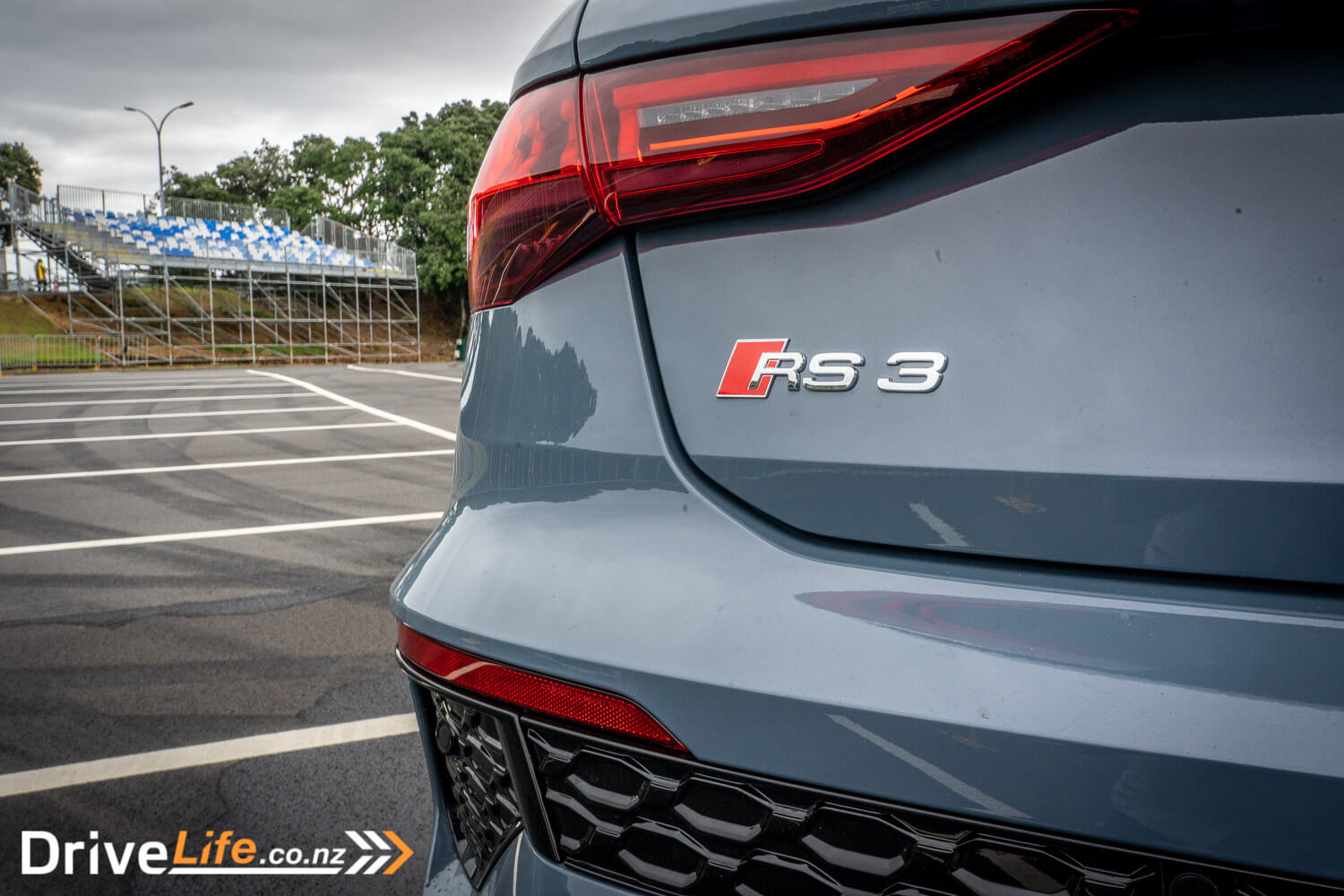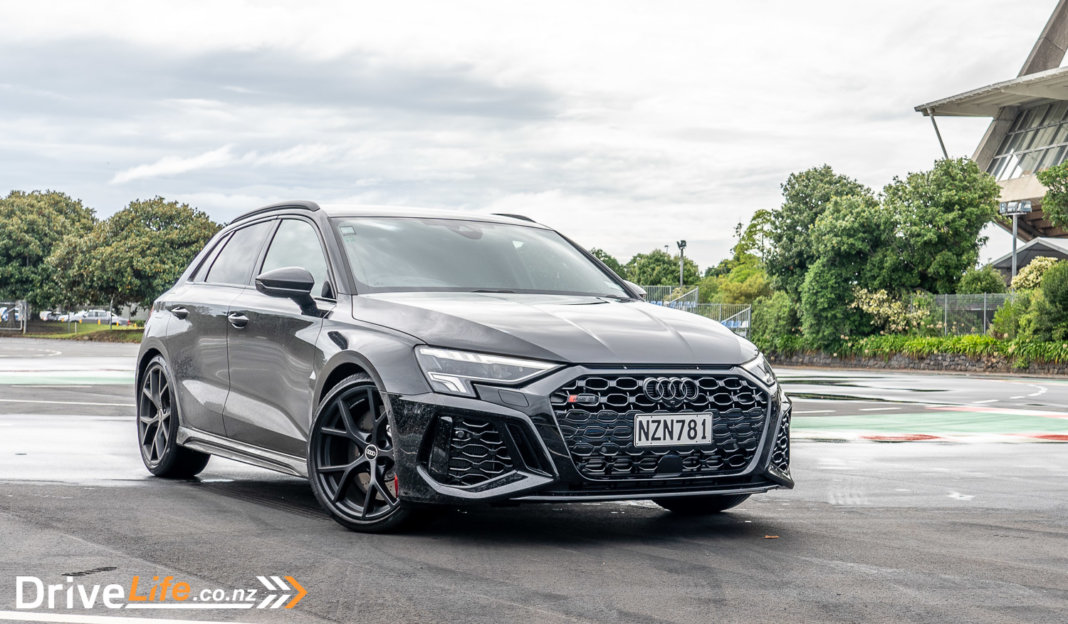At the recent (virtual) launch of the 2022 Audi RS3, much excitement was given to the new rear-end of the car. Gone is the rear differential, in its place a torque splitter. While we have yet to do a full review of the new RS3 (it’s coming up soon), Audi invited DriveLife to Auckland for an ‘Audi RS3 Experience’ at Mt Smart Stadium, to learn more about the RS3’s torque splitter, and do some driving on a closed circuit to see in a small way what this car can do.
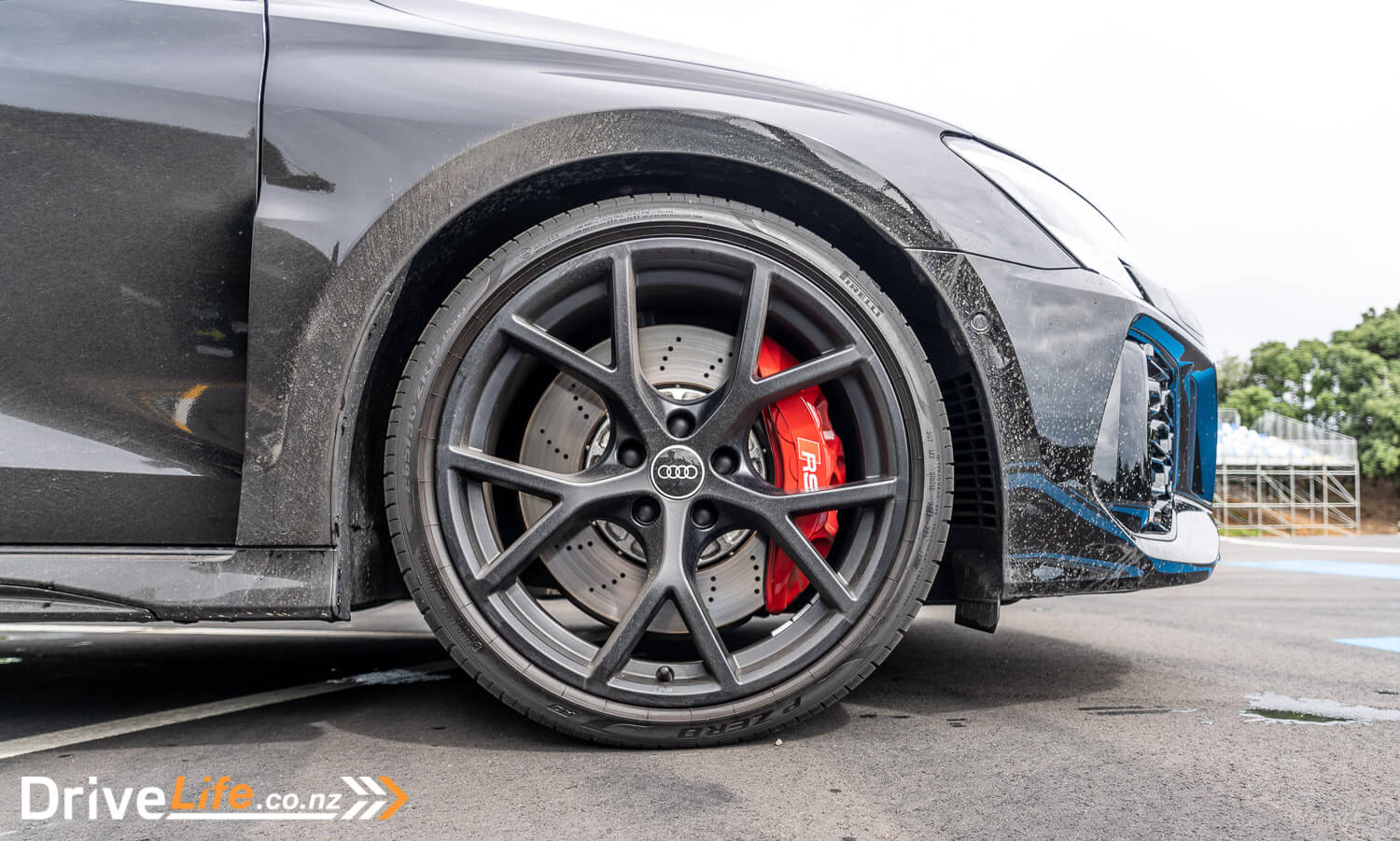
On arriving at Mt Smart Stadium, it seems that the stadium group has built a permanent gymkhana track in the car park (I’m not kidding). I’m not sure about its future use, but maybe some boy racers could use it at night, instead of using our streets? Just a thought. Regardless, for today it’s perfect. Laid out is a short track, with someone out there with a hose making it as wet as possible.
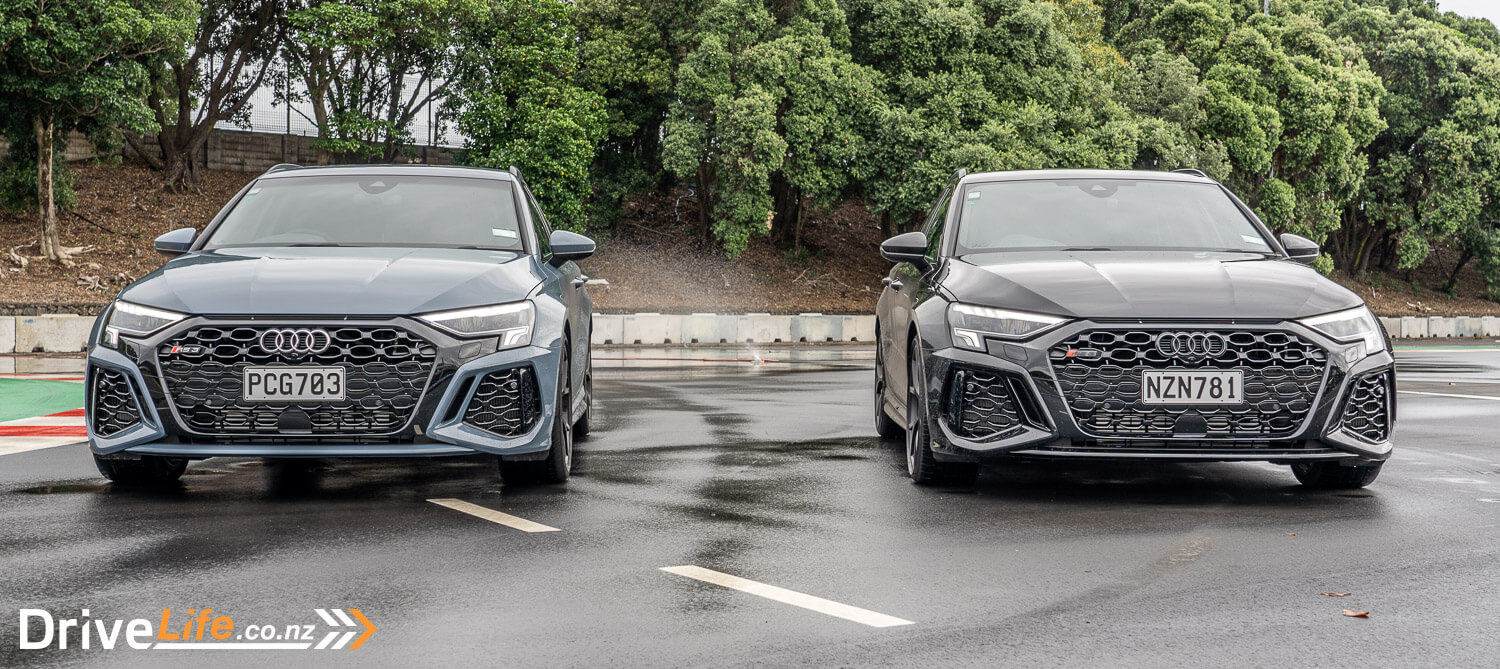
Lay of the RS Land
As always, first up we need to hear some facts and figures around the RS3, and RS cars in general. Dean Sheed, Audi New Zealand GM, gave us the initial run down.
Apparently, New Zealand is still number one per capita for RS sales overall, in the whole world. Here, 23% of new Audi sales have an RS badge, and we’ve been #1 worldwide for 9 years. “The factory wonders how we do it,” says Dean. I think we all know the answer to that one.
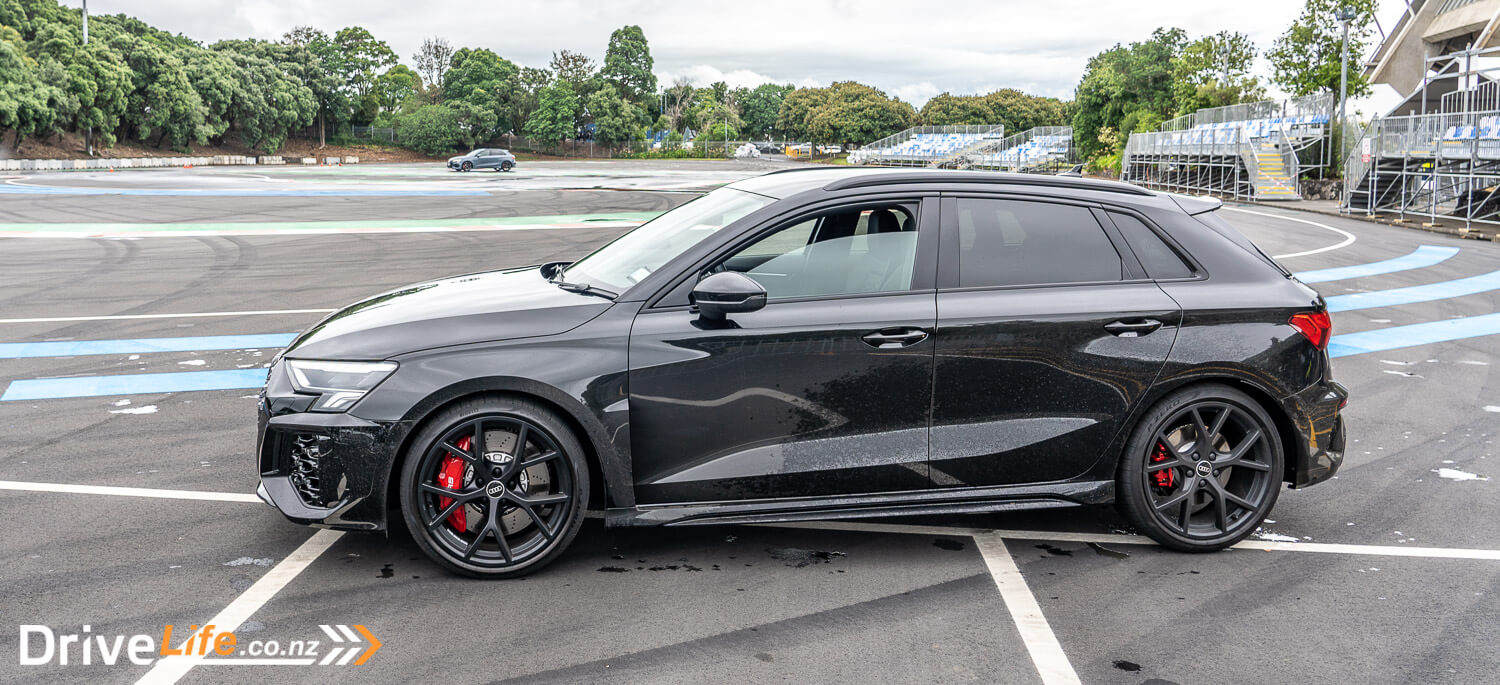
They see the RS3 as the entry into the RS model line, hoping that buyers will move up to models like the RS4, RS5, and RS6. To date, there are almost 400 RS3s in New Zealand, and for 2022, Audi is forecasting 100 sales. They’ve already presold 73, with March seeing the first deliveries.
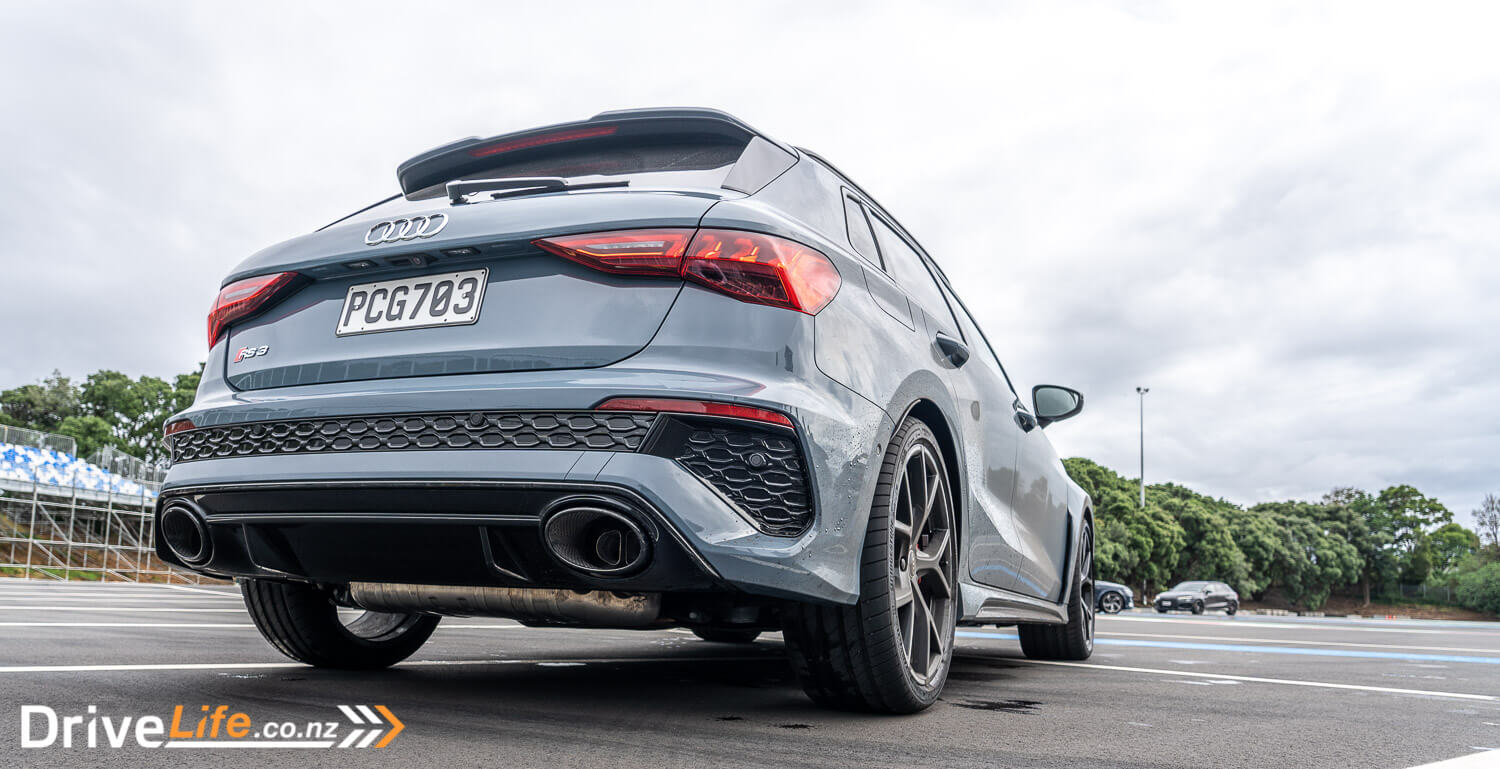
From this point on, there’s a waiting list of around 6 months for a new RS3, for those wanting the 294kW, 5-cylinder turbo car that puts out 500Nm of torque. That engine gets the car to 100km/h in 3.8 seconds, which is faster than the RS4.
The car has a few different modes, both of which we’ll be ‘testing’ today. There’s RS Performance mode and RS Torque Rear mode. RS Performance is really for the track, where it adjusts things like steering angles, engine performance, and braking performance for ideal track-day driving.
At the other end of the scale is RS Torque Rear, which forces 100% of torque to go to the rear wheels only. As you can imagine, this screams out “drift mode”. We are all looking forward to testing this out today.

The torque splitter has clutches on each side of where a traditional diff head would be, and these can transfer up to 700Nm to one rear wheel when using RS Torque Rear mode. In general driving, the torque splitter can and does send more drive to an outside wheel, for better cornering and stability.
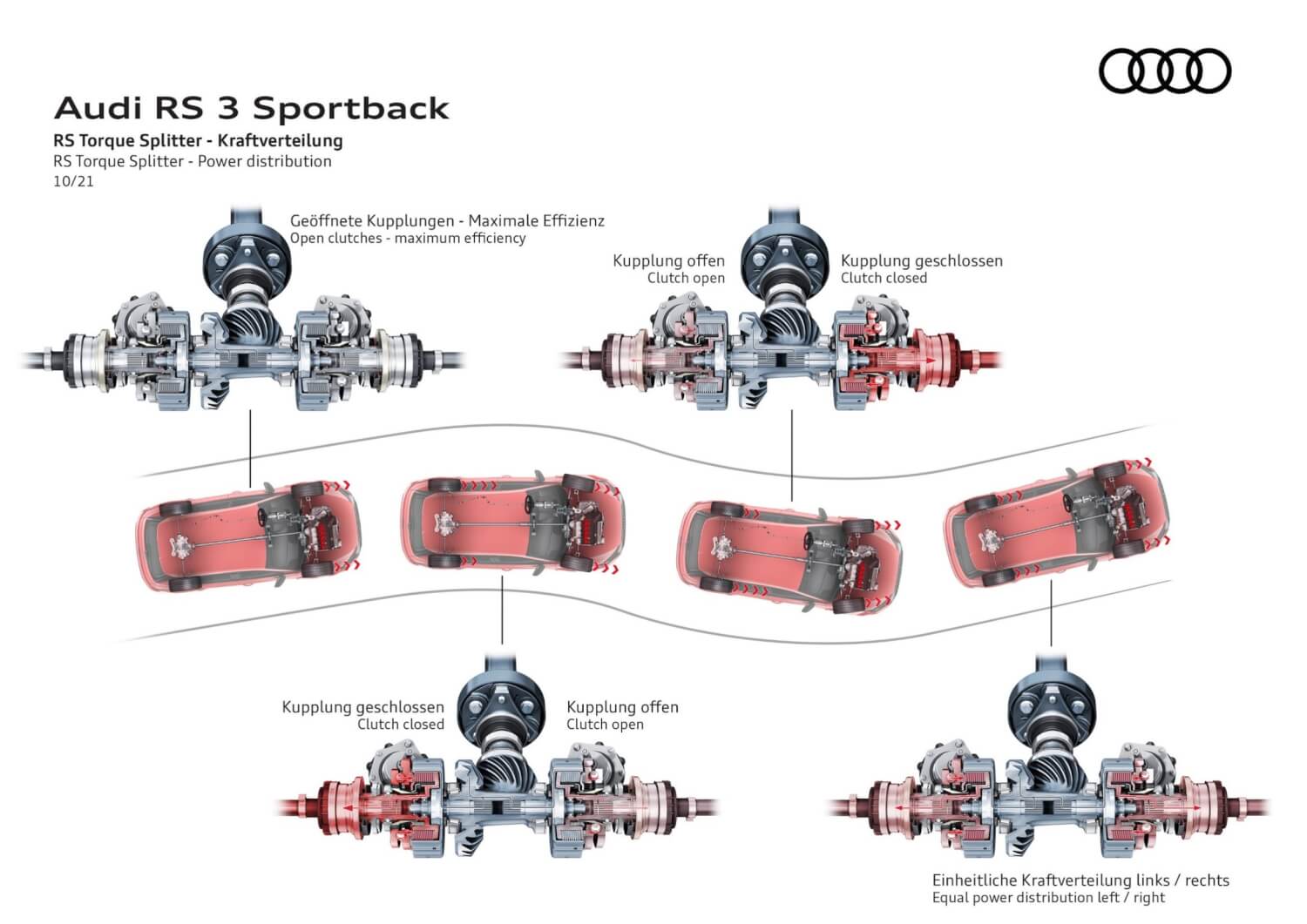
Enough of the tech talk, it was time to get out on the drift track and try the car out. As is usual for Audi, the Downforce team of professional drivers would be there to give us guidance on how to get the RS3 Sportback sideways for the longest time possible.
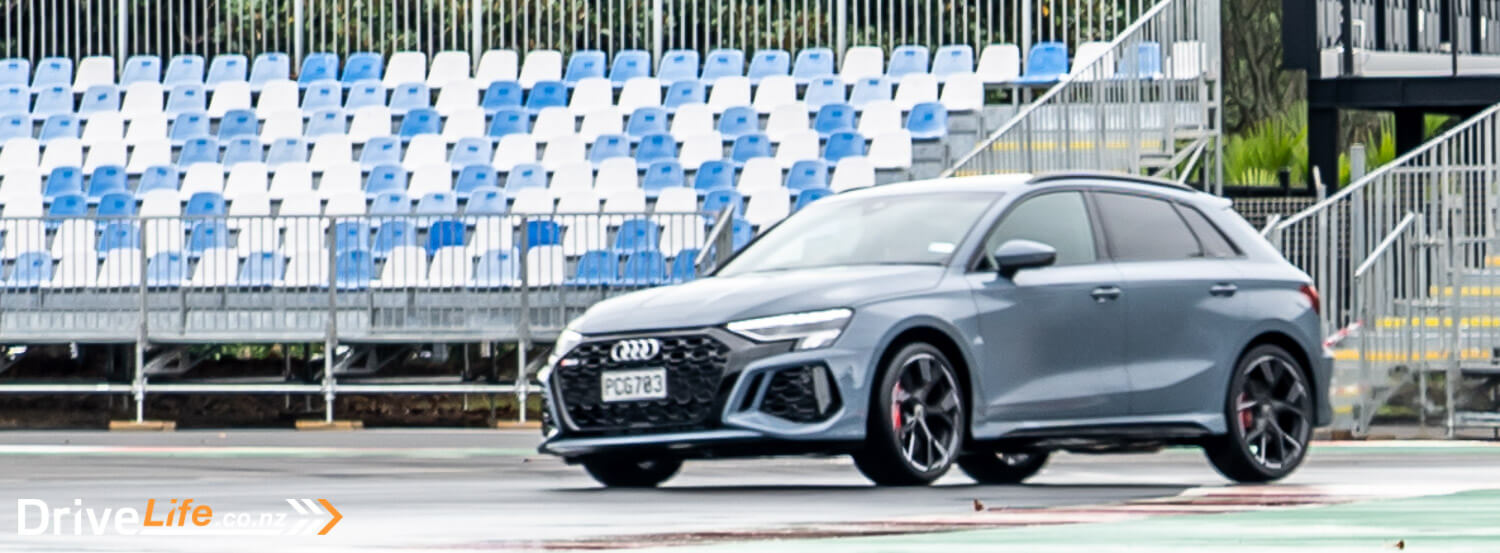
With four drivers in two cars, we’d be switching out drivers after four laps, with the Downforce team reducing the level of the car’s assistance each lap – as long as we were improving. I headed out first with Tim from Downforce, starting off in Dynamic mode with Electronic Stability Control (ESC) left on its standard setting for Dynamic drive mode. One thing that hits you when you drive the RS3 is the engine noise. With its unique 1-2-4-5-3 firing order, the engine sounds like no other and you can bet when it’s pumping out 294 kilowatts of power, it’s going to sound very good.
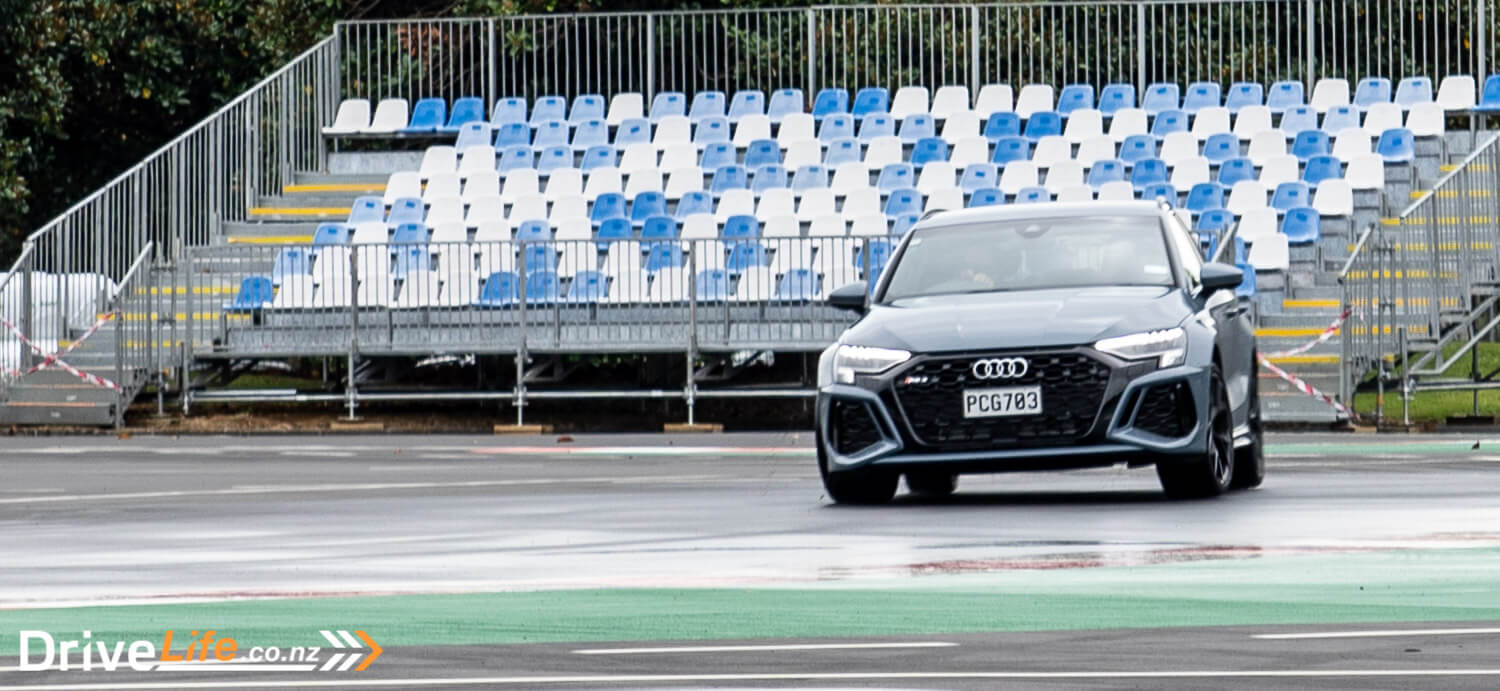
So, the first lap was a bit of a loss for me. Inherent habits of trying to get around a corner quickly blocked me from doing what I was supposed to be doing; turning the wheel sharply, holding it there and nailing the gas pedal. Lap two was better, and I managed at least to get it to break traction and get sideways without gaining too much speed.
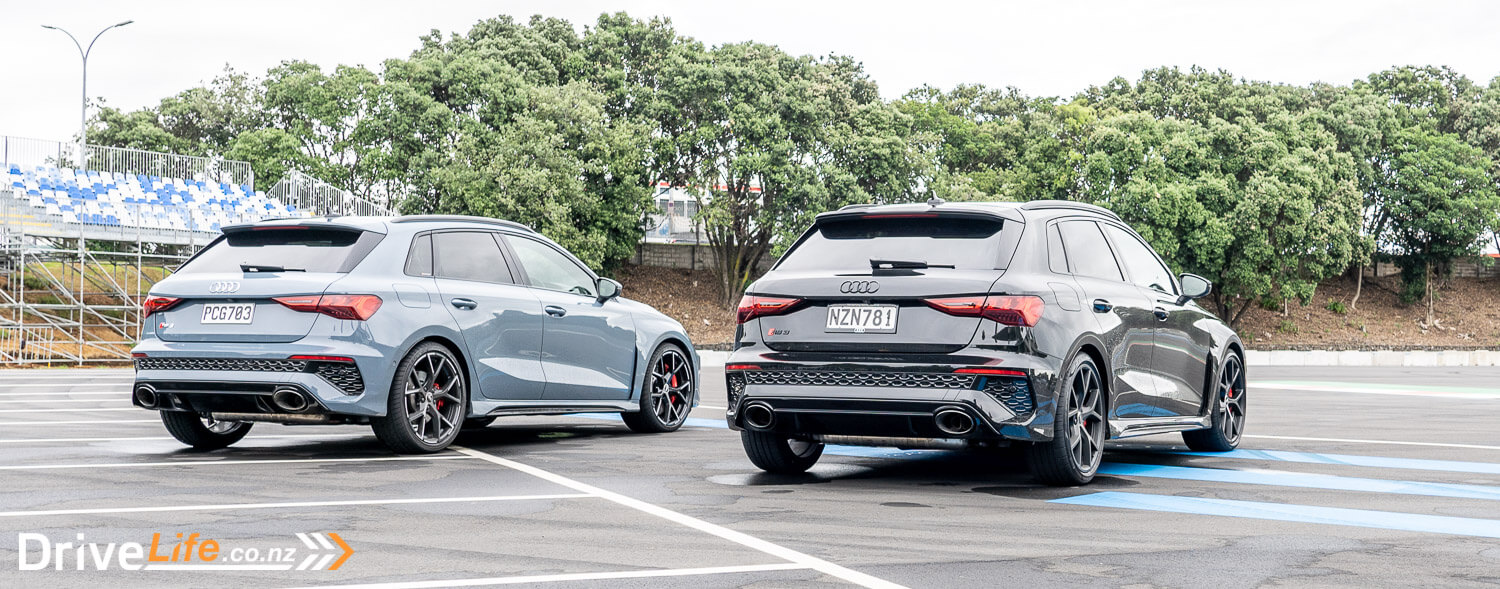
The next few laps went better, as we switched the drive mode to RS Performance. As expected, things changed. The car felt more neutral than before, and then with ESC turned to Sport +, it was easier to get the back end loose. After a driver change, my laps came up again, and we put the car into RS Torque Rear mode, the one I had really been waiting for. With warnings of too long on a full-throttle meaning a spin-out, I was a bit more cautious to start with, not wanting to make a dick out of myself and spinning the car out straight away. A few laps in and I was starting to get in the groove, improving at least to a not-embarrassing level.
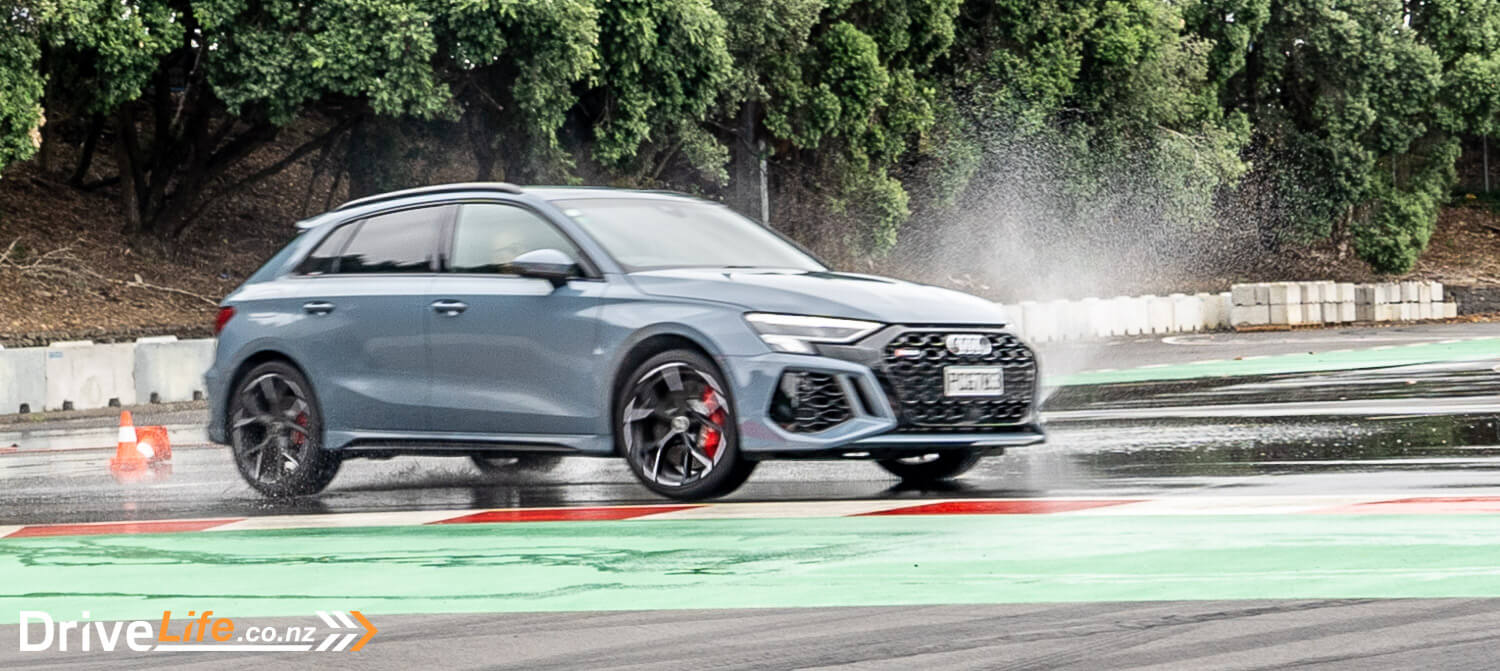
All too quickly, my last set of laps was over. I could have spent all day at Mt Smart doing this in the RS3, but hopefully another day. It’s an awesome car and I am sure it be amazing on a normal race track, but to be able to select RS Torque Rear mode just gives it another reason to be awesome.
We’ll be reviewing this car soon. Be sure to join our mailing list so you don’t miss it.
